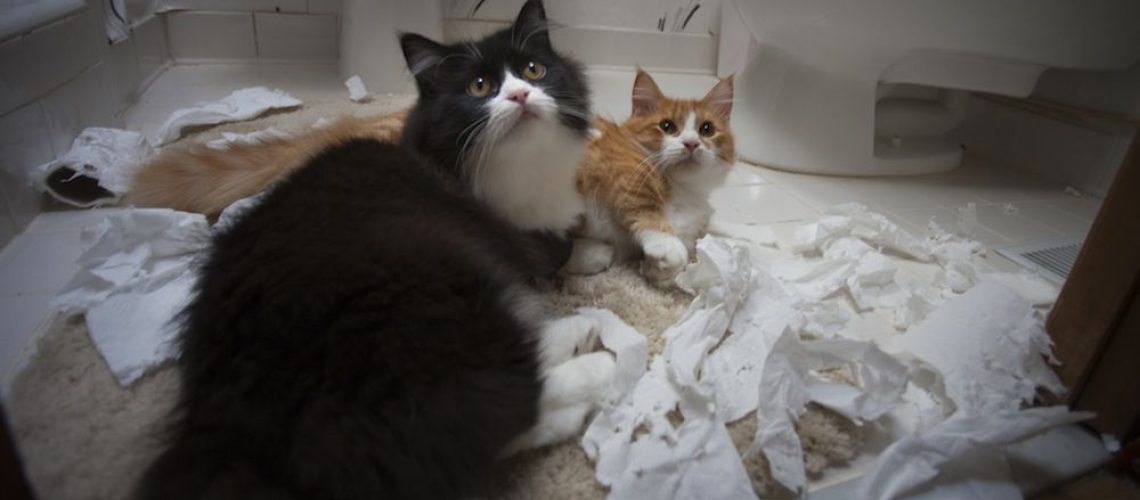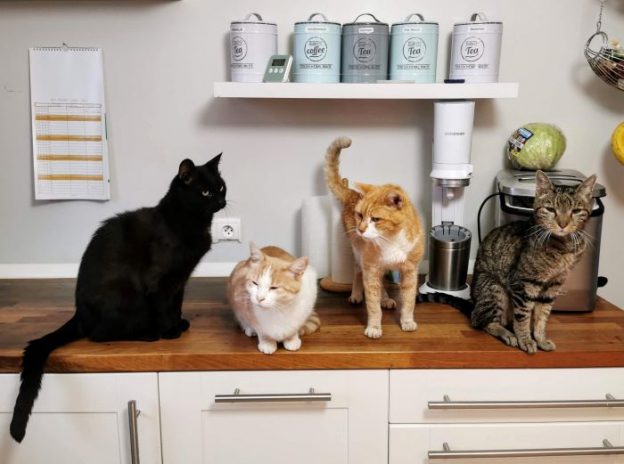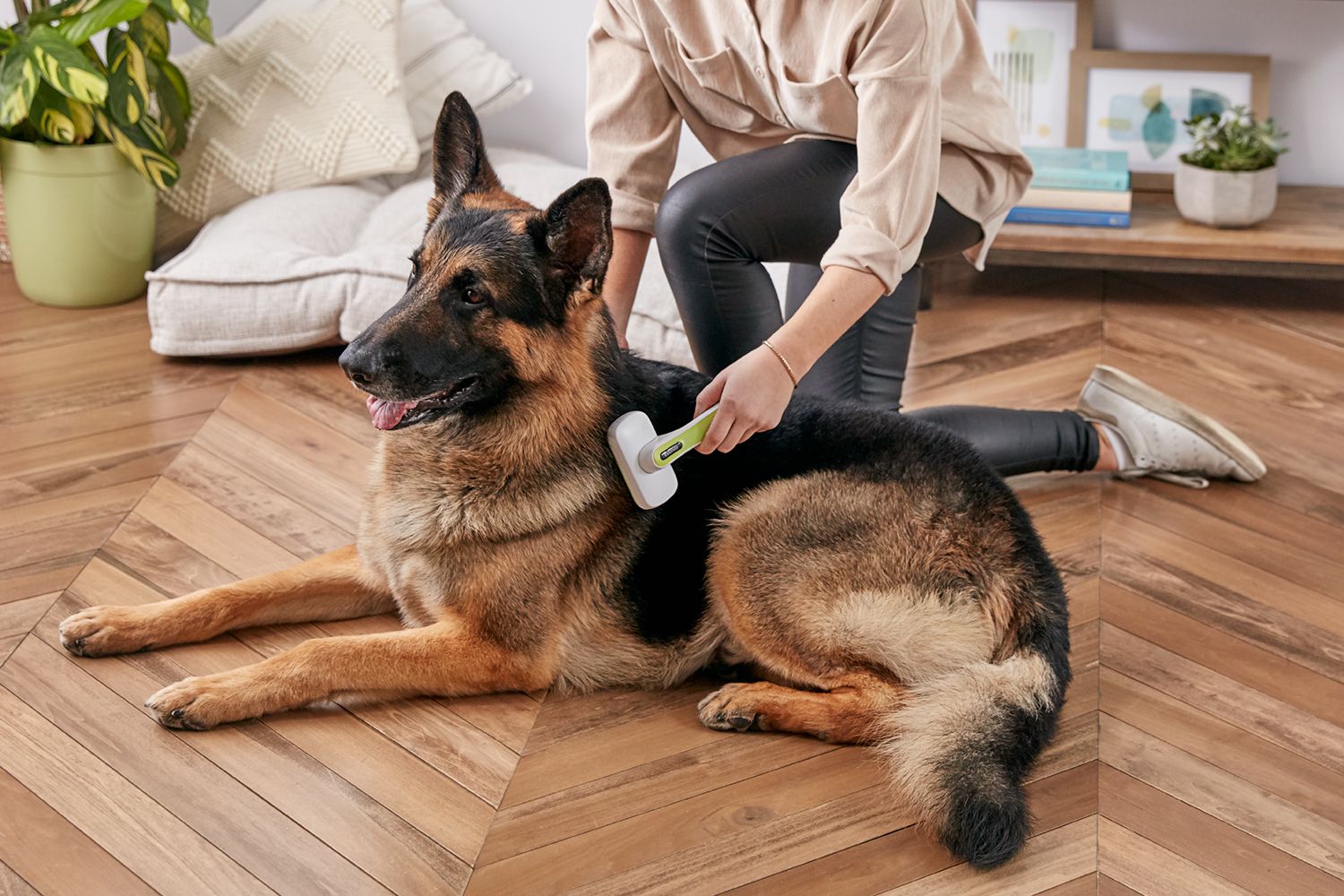Discover the unique joys of being a cat owner - from the soothing purrs that bring comfort, to the hilarious quirks and playful bonding moments.
Key Takeaways:
- Cat owners understand the joy of having a furry companion who provides unconditional love and companionship.
- They know the struggle of dealing with hair everywhere and constantly cleaning up shedding fur.
- Cat owners understand the frustration of their cat knocking things off counters and shelves, seemingly for no reason.
- They are familiar with the unique sound of a cat's meow and can often decipher what their cat is trying to communicate.
- Cat owners know the importance of providing mental stimulation for their feline friends through toys, scratching posts, and interactive playtime.
Unique Things Only Cat Owners Understand
The Joy of a Purring Companion
One of the unique things about being a cat owner is experiencing the joy of having a purring companion. When a cat purrs, it's like they are sharing their contentment and happiness with you. It's a soothing sound that can bring comfort and relaxation. Whether you're cuddling with your cat on the couch or falling asleep to the gentle hum of their purr, it's a special bond that only cat owners truly understand.
The Quirkiness of Cat Behavior
Cats have a reputation for being quirky creatures, and as a cat owner, you get to witness their unique behaviors firsthand. From zooming around the house at lightning speed for no apparent reason to perching themselves in the most peculiar places, cats never fail to entertain. They have their own little quirks and idiosyncrasies that make them one-of-a-kind pets. Whether it's watching your cat chase after invisible prey or seeing them contort themselves into strange positions while grooming, these moments bring laughter and joy that only cat owners can appreciate.
The Bonding Ritual of Playtime
Playtime is an essential part of owning a cat, and it's during these moments that you can truly bond with your feline friend. Cats love interactive play, whether it's chasing after a feather toy or pouncing on a laser pointer. Engaging in playtime not only provides exercise for your cat but also strengthens the bond between you both. It's in these playful interactions that you can see your cat's true personality shine through - their agility, curiosity, and hunting instincts all come into play. As a cat owner, you understand the importance of carving out time for play and cherish these special moments together.
The Unexpected Places Where Cats Love to Sleep
The Cozy Comfort of a Cardboard Box
One of the unexpected places where cats love to sleep is in a simple cardboard box. It may seem strange, but cats find comfort and security in these confined spaces. They can curl up inside, feeling protected from the outside world. The walls of the box provide a sense of enclosure that mimics the feeling of being in a den or hiding spot. As a cat owner, it's not uncommon to find your feline friend snoozing away happily in an empty box, completely content with their chosen sleeping spot.
The Warmth and Softness of Laundry Baskets
Another surprising place where cats love to sleep is in laundry baskets filled with freshly laundered clothes. Cats are attracted to the warmth and softness of the clothes, making it an irresistible napping spot. The familiar scent of their owner's clothes also provides a sense of comfort and security. It's not uncommon for cat owners to find their furry friends curled up amidst a pile of clean laundry, enjoying the cozy embrace of warm fabrics.
The Heightened Perch of Bookshelves and Cabinets
Cats are natural climbers and love being up high, which is why they often choose unexpected places like bookshelves and cabinets as their preferred sleeping spots. These elevated perches allow them to observe their surroundings from a safe vantage point while still feeling secure. It's fascinating to see how cats effortlessly navigate their way onto high surfaces and make themselves comfortable on top of books or kitchen cabinets. As a cat owner, you come to appreciate their ability to find unique sleeping spots that suit their preferences.
How Cats Show Affection Differently from Other Pets
Gentle Head Butts and Cheek Rubs
Cats have their own unique ways of showing affection, which can be different from other pets. One way cats express their love is through gentle head butts and cheek rubs. When a cat rubs its head against you or presses its cheek onto your hand, it's their way of marking you with their scent and showing that they trust and feel comfortable around you. It's a sign of affection that is exclusive to cats and can make you feel incredibly special as a cat owner.
The Gift of Slow Blinks
Another way cats show affection is through slow blinks. If you've ever caught your cat staring at you and then slowly closing its eyes, it's like they are giving you a kitty kiss. This behavior is known as a "slow blink" or "cat kiss" and is considered a sign of trust and contentment. When a cat feels relaxed enough to close its eyes in your presence, it means they feel safe and secure with you. As a cat owner, these slow blinks can melt your heart and make you feel deeply connected to your feline companion.
Purring as a Sign of Contentment
One of the most well-known ways cats show affection is through purring. While some other animals may purr too, cats have perfected this form of communication. Purring is often associated with contentment, relaxation, and happiness. When your cat curls up next to you and starts purring, it's their way of expressing love and comfort in your presence. The soothing vibrations of their purr can also have a calming effect on their owners, making it a mutually beneficial form of affection.
The Importance of Scratching Posts for Cat Owners
Maintaining Healthy Claws
Scratching is a natural behavior for cats, and providing them with a scratching post is essential for maintaining healthy claws. Cats scratch to remove the outer sheath of their claws, keeping them sharp and in good condition. Without an appropriate scratching post, cats may resort to scratching furniture or other household items, causing damage that can be costly to repair. By providing a designated scratching post, cat owners can protect their furniture while also ensuring their cat's claws stay healthy and well-maintained.
Marking Territory
Cats have scent glands on their paws, and when they scratch, they leave behind both visual and scent markings. These markings serve as a way for cats to communicate and mark their territory. By having a scratching post in your home, you give your cat an outlet for this natural behavior. The scent left behind on the scratching post helps create a familiar and comforting environment for your cat, reducing stress and promoting a sense of security.
Providing Mental Stimulation
A scratching post not only serves physical needs but also provides mental stimulation for cats. Scratching allows cats to stretch their muscles and release pent-up energy. It also provides an opportunity for them to engage in natural behaviors like stretching, climbing, and even playing. Having access to a scratching post gives cats an outlet for these activities, helping prevent boredom and promoting overall mental well-being.
Challenges of Keeping Furniture Scratch-Free for Cat Owners
Selecting Cat-Friendly Furniture Materials
One of the challenges cat owners face is finding furniture materials that are resistant to scratches. Cats have sharp claws that can easily damage certain fabrics like silk or velvet. Opting for materials such as microfiber or leather can be more durable against scratches. Additionally, choosing furniture with tightly woven fabrics or patterns can help camouflage any potential scratches, making them less noticeable.
Using Deterrents and Protective Covers
To protect furniture from scratching, cat owners can use deterrents and protective covers. Applying double-sided tape or aluminum foil to areas prone to scratching can discourage cats from targeting those spots. Using plastic or fabric covers specifically designed for furniture protection can also provide a barrier between the cat's claws and the surface of the furniture, minimizing damage.
Providing Alternative Scratching Surfaces
Another strategy to keep furniture scratch-free is by providing alternative scratching surfaces. By offering a variety of scratching posts or boards in different textures and heights, cat owners can redirect their cats' natural scratching instincts away from furniture. Placing these alternatives near favorite resting spots or close to furniture that is frequently targeted can help encourage cats to choose the appropriate surfaces for scratching.
Cat Communication: Body Language and Vocalizations with Owners
Tail Position and Movement
A cat's tail position and movement are important indicators of their mood and communication. When a cat holds its tail upright with a slight curve at the end, it typically signifies a happy and content state. On the other hand, a puffed-up tail indicates fear or aggression. Understanding your cat's tail language can help you gauge their emotions and respond accordingly.
Ears: Forward, Backward, or Sideways
The position of a cat's ears also conveys valuable information about their feelings. Ears held forward indicate attentiveness or curiosity, while flattened ears suggest fear or aggression. Sideways ears may indicate relaxation or playfulness. Paying attention to your cat's ear positions can give you insights into their current emotional state.
Vocalizations: Meows, Purrs, and Hisses
Cats use various vocalizations to communicate with their owners. Meowing is a common way cats seek attention or express their needs, such as hunger or wanting to be let outside. Purring often signifies contentment and can also be a sign of seeking comfort or attention. Hissing, on the other hand, is a warning sign indicating fear or aggression. Understanding these vocal cues can help cat owners better understand and respond to their feline companions.
The Reason Behind Cats Bringing "Gifts" to Their Owners
Natural Hunting Instincts
Cats are natural hunters, and when they bring "gifts" to their owners, it stems from their instinctual hunting behavior. In the wild, cats would hunt and bring prey back to their family group as a way of providing for them. By bringing you a small animal or toy, your cat is displaying its hunting prowess and offering you a gift in the same way it would for its own family.
Showing Affection and Trust
Bringing gifts can also be seen as a display of affection and trust from your cat. By presenting you with something they value, whether it's a mouse toy or even an insect they caught, they are showing that they care about you and want to share their successes with you. It's a way for cats to bond with their owners and demonstrate their love in their own unique feline way.
Seeking Validation and Approval
Cats may also bring gifts as a means of seeking validation and approval from their owners. When they present you with something they have caught or found, they are looking for praise and recognition for their hunting skills. By acknowledging your cat's gift-giving behavior positively, you reinforce the bond between you both and provide them with the validation they seek.
The Benefits of Having a Cat as a Pet, According to Experienced Owners
Companionship and Emotional Support
Owning a cat can provide companionship and emotional support. Cats are known for their independent nature, but they also form strong bonds with their owners. Coming home to a purring cat or having a feline friend curl up beside you can bring comfort and reduce feelings of loneliness. The presence of a cat can provide emotional support during difficult times and offer a sense of calmness in daily life.
Stress Relief and Relaxation
Cats have a calming effect on their owners, which can help relieve stress and promote relaxation. The rhythmic sound of a cat's purr has been shown to lower blood pressure and reduce anxiety. Simply stroking your cat's fur or watching them play can have therapeutic benefits, helping you unwind after a long day.
Responsibility and Routine
Owning a cat comes with responsibilities that can be beneficial for both adults and children. Taking care of a pet teaches responsibility, as cats rely on their owners for food, water, grooming, and medical care. Establishing routines around feeding, playtime, and litter box maintenance can also bring structure to daily life.
The Mysterious and Independent Personalities of Cats Explained
Natural Instincts for Survival
Cats have retained many of their wild instincts despite being domesticated pets. Their mysterious and independent personalities can be attributed to these natural survival instincts. Cats are solitary hunters by nature, preferring to rely on themselves rather than forming social groups like dogs do. This independence translates into their behavior as pets, making them more self-reliant compared to other animals.
The Need for Personal Space
Cats are known for their desire for personal space. While they can form strong bonds with their owners, they also value their alone time. This need for personal space is rooted in their instincts to establish territory and defend it from potential threats. Understanding and respecting a cat's need for solitude is essential in building a harmonious relationship with them.
Curiosity and Playfulness
Cats have an innate curiosity that drives their independent personalities. They are natural explorers, always on the lookout for new sights, sounds, and smells. This curiosity fuels their playfulness as well, as they engage in activities that mimic hunting behaviors. Providing opportunities for mental stimulation and play can help satisfy a cat's curious nature and prevent boredom.
| Conclusion | |
| 1. | Cat owners know the joy of waking up to a furry alarm clock demanding breakfast. |
| 2. | We understand the struggle of trying to work while our cats decide to nap on our keyboards. |
| 3. | We appreciate the unique bond that forms when our cats choose us as their favorite human. |
Do cats care if you cry?
Cats possess the ability to detect their owner's emotional state, including feelings of sadness and changes in mood and emotion. This means that cats can sense and respond to their owner's various emotional states.
What goes on in a cat's mind?
In summary, cats don't ponder about their day or their emotions. However, they do reflect on past experiences they've had. For instance, when a cat is relaxed, it is not specifically contemplating anything.
What language do cats think in?
Based on research, it is believed that cats do not think using any specific language because their brains are not capable of it. However, they are expressive creatures and communicate with each other and their owners through body language and vocalizations.
What do cats think when we talk to them?
Cats do not have the cognitive abilities to understand human language, but they can sense when you are speaking to them. In other words, cats perceive human language in a similar way to how we understand their meowing. It is comparable to how we interpret a cat's body language, such as their arched back or swishing tail.
Can cats sense depression?
It seems that cats have the ability to detect human emotions, including depression. Cats are perceptive and intuitive creatures, which enables them to interpret emotional signals from humans. Therefore, when a person is feeling depressed, cats can sense it and may even approach them more closely.
Do cats know we love them?
Even adult cats have a special set of meows that they reserve specifically for their owners. When a cat meows at you, it is a sign of trust, love, and a recognition that you also care for them.

















